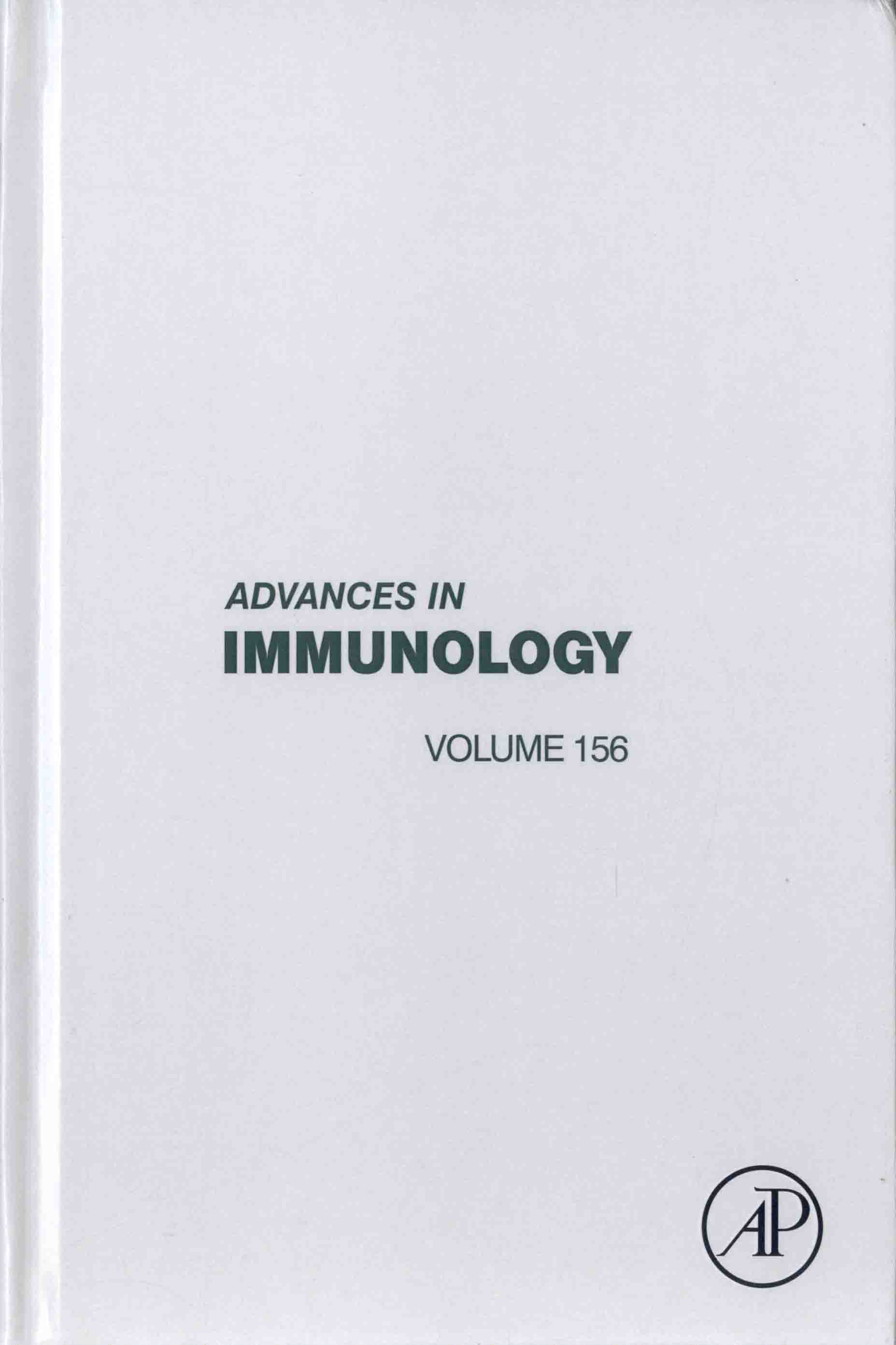 |
Advances in immunology. Volume 156 / edited by Frederick W. Alt, Kenneth M. Murphy. -- Amsterdam : Elsevier, c2022. – (58.691/A244/v.156) |
Contents
Contributors
1. Self-referential immune recognition through C-type lectin receptors
1. Introduction
2. Development of functional CLRs
3. Dectin clusters
4. Recognition of various self-ligands through CLRs
5. Organogenesis
6. Perspectives
Acknowledgments
Conflict of interest disclosures
References
2. Genetic susceptibility to autoimmunity--Current status and challenges
1. Introduction
2. Genetic architecture of autoimmune diseases
3. Genetic technology revolution in autoimmune diseases
4. Genetic susceptibility of autoimmune diseases--Recent progress
5. Genetic risk shared between autoimmune diseases
6. Genetic factors shared between autoimmune diseases and other diseases
7. From genetics research to translational medicine in autoimmunity
8. Concluding remarks
Acknowledgments
References
3. Recent advances in the activation and regulation of the cGAS-STING pathway
1. Introduction
2. An overview of the cGAS-STING pathway
3. Evolution of the cGAS-STING pathway and the CD-NTase family
4. Activation of cGAS
5. Activation of STING
6. Regulation of the cGAS-STING activation
References
4. The implications of IL-15 trans-presentation on the immune response
1. Introduction
2. IL-15Rα recycles and presents IL-15 in trans to neighboring cells
3. IL-15Rα/IL-15 and IL-15Rα/IL-15L are ancient receptor/cytokine systems
4. Genetic organization of the IL15 gene and regulation of IL-15 production
5. Organization of the IL-15Rα locus complex includes an alternative exon that prevents cleavage of IL-15Rα from the cell membrane and facilitates trans-presentation of IL-15
6. Control of IL-15 transcription
7. Control of IL-15 translation
8. IL-15Rα and 11_-15 must be expressed by the same cell for efficient trans-presentation
9. IL-15 signaling pathways
10. NKG2D signaling is coupled to the IL-15 signaling pathway
11. IL-15 trans-presentation is critical for NK-cell development and function
12. IL-15 trans-presentation and the differentiation of iNKT cells
13. IL-15 trans-presentation regulates homeostasis of CD4+ T lymphocytes
14. IL-15 trans-presentation plays a role in the development, homeostasis, and activation of dendritic epidermal T cells (DETCs)
15. The role of IL-15 in the homeostasis of γδ cells
16. IL-15 trans-presentation controls the expression and survival of CD44high CD8+ T cells
17. Dendritic cells and macrophages mediate the effect of IL-15 on CD8+ CD44high memory phenotype T cells
18. The effect of IL-15 trans-presentation from DCs to NK cells
19. IL-15-dependent IELs are a heterogeneous group of cells in the small and large intestine where they contribute to the first level of defense against infections
20. IL-15Rα trans-presents IL-I 5, thereby regulating tissue resident T cells and tissue specific destruction
21. IL-15 and autoimmune diseases
22. CD8+ CD122+ CD127- PD-1+ CD28+/- regulatory T cells are essential for the maintenance of T-cell homeostasis
23. IL-15 in cancer
24. Conclusions and therapeutic perspectives
References